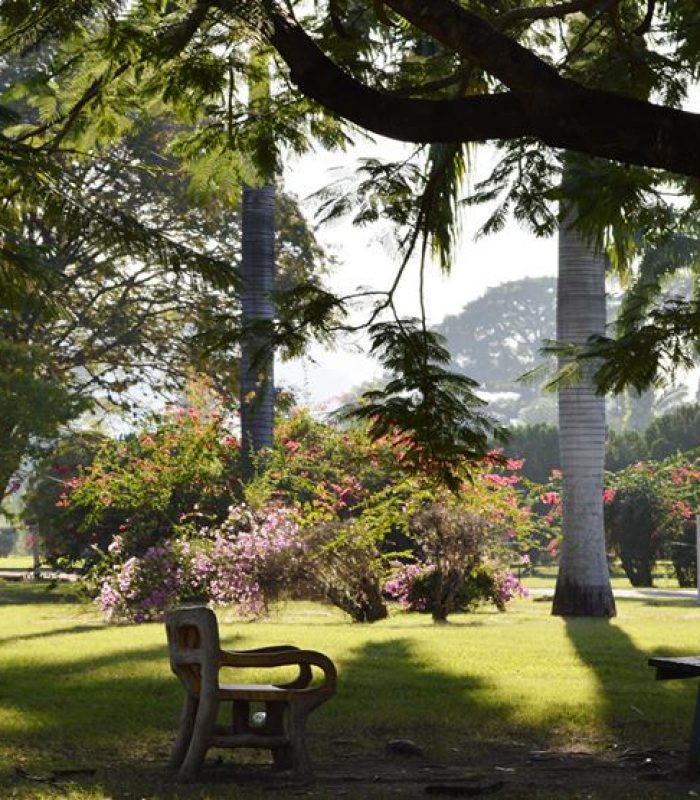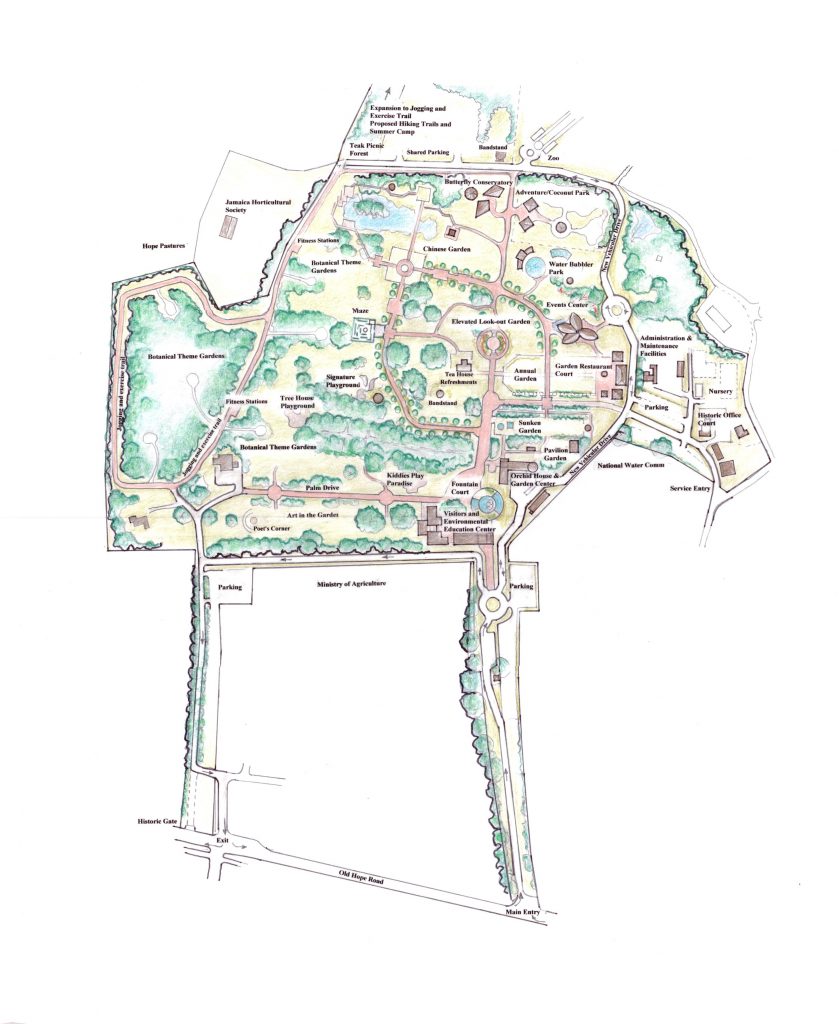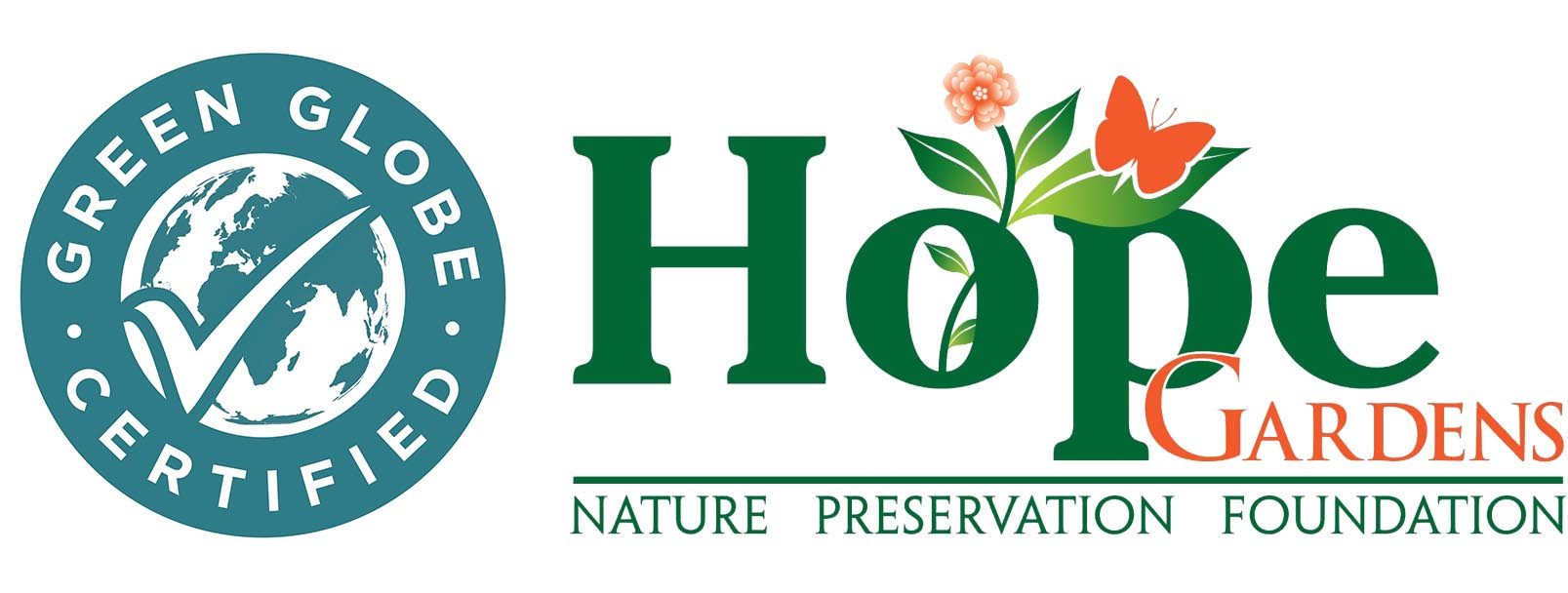History
the hope royal botanic gardens (popularly referred to as “hope gardens”) were formerly part of major richard hope’s estate, one of the english officers who helped to capture jamaica from the spanish in 1655; major hope (after whom the estate was named) was rewarded with a parcel of land “stretching from the sea to the hills in new castle”.rred to as “hope gardens”) were formerly part of major richard hope’s estate, one of the english officers who helped to capture jamaica from the spanish in 1655; major hope (after whom the estate was named) was rewarded with a parcel of land “stretching from the sea to the hills in new castle”.
The property, an original Sugar Plantation, is of significant historical importance as it was also the original water supply source for Kingston since 1766. Around 1874 the 200 plus acres of Hope Estate land eventually became “Hope Gardens” a central Botanical Establishment in the Island used as an Experiment and Teaching Station, but later expanded to become a public park. Important historical structures are still present at Hope Gardens and surrounding properties at the University of Technology, the University of the West Indies, Jamaica College and the National Water Commission Filter Plant at Liguanea; Hope Gardens therefore is a preserved site under the National Heritage Trust.
In 1953 on the visit of Queen Elizabeth II to Jamaica, Her Majesty was impressed by the beauty and variety of the botanical collection at Hope Gardens and as such bestowed the coveted designation of “Royal” resulting in the property being renamed “The Hope Royal Botanic Gardens” (HRBG). This distinction was the first (1st) for any public garden or park in the Caribbean Region for many years. The property, an original Sugar Plantation, is of significant historical importance as it was also the original water supply source for Kingston since 1766. Around 1874 the 200 plus acres of Hope Estate land eventually became “Hope Gardens” a central Botanical Establishment in the Island used as an Experiment and Teaching Station, but later expanded to become a public park. Important historical structures are still present at Hope Gardens and surrounding properties at the University of Technology, the University of the West Indies, Jamaica College and the National Water Commission Filter Plant at Liguanea; Hope Gardens therefore is a preserved site under the National Heritage Trust.
In 1953 on the visit of Queen Elizabeth II to Jamaica, Her Majesty was impressed by the beauty and variety of the botanical collection at Hope Gardens and as such bestowed the coveted designation of “Royal” resulting in the property being renamed “The Hope Royal Botanic Gardens” (HRBG). This distinction was the first (1st) for any public garden or park in the Caribbean Region for many years.


The HRBG comprised of the Botanic Gardens and Hope Zoo had been directly managed and funded by the Government of Jamaica (GoJ) through the Ministry of Agriculture for the people of Jamaica. The property is owned by the GoJ through the National Land Agency.
The 237 acres which currently encompasses the HRBG and Hope Zoo was leased to Nature Preservation Foundation (NPF) in 2004 and management was transferred from the Ministry of Agriculture (now Ministry of Industry, Commerce, Agriculture and Fisheries) to NPF with a continuing subvention to the annual operational budget. The Hope Zoo was subsequently sub-leased by NPF to the Hope Zoo Preservation Foundation, an affiliate of the Guardsman Group.
The Board of NPF determined that the wife of the serving Governor General of Jamaica be invited to be Patron of the Hope Royal Botanic Gardens and in that regard, Kings House confirmed on March 22, 2012, the gracious acceptance by her Excellency the Most Honourable Lady Allen, to be the first Patron in the HRBG’s history.


